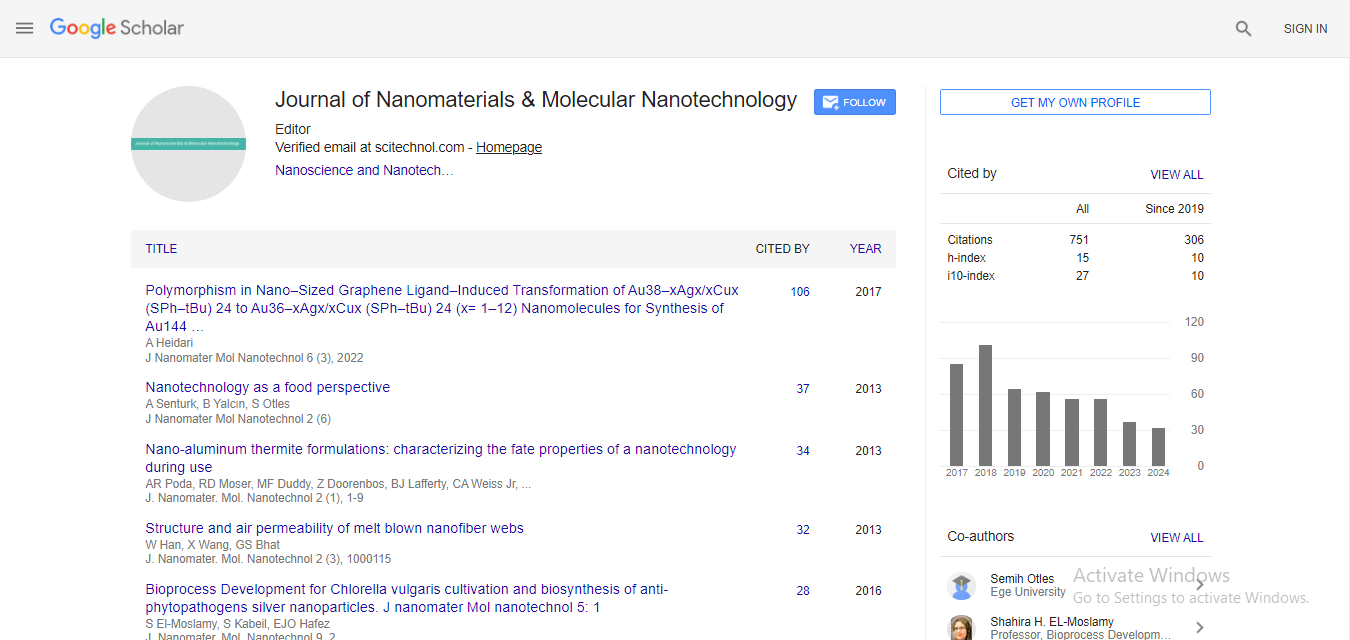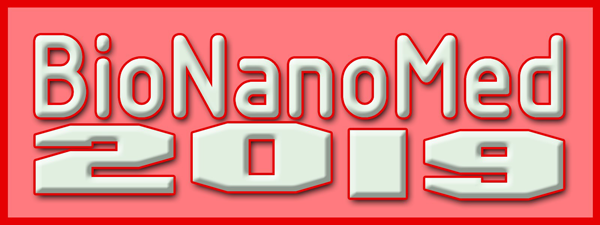Perspective, J Nanomater Mol Nanotechnol Vol: 11 Issue: 6
Combined Two-Photon Polymerization and Laser Additive Manufacturing for Nanofabrication
Erwin Huskens *
Department of Molecular Nanofabrication, University of Twente, Enschede, The Netherlands
*Corresponding author: Erwin Huskens
Department of Molecular Nanofabrication, University of Twente, Enschede, The Netherlands
E-mail: huskinserwin@gmail.com
Received date: 27 May, 2022, Manuscript No. JNMN-22-68525;
Editor assigned date: 30 May, 2022, Pre QC No. JNMN-22-68525 (PQ);
Reviewed date: 13 June, 2022, QC No. JNMN-22-68525;
Revised date: 20 June, 2021, Manuscript No. JNMN-22-68525 (R);
Published date: 27 June, 2022, DOI: 10.4172/2324-8777.1000345
Citation: Huskens E (2022) Combined Two-Photon Polymerization and Laser Additive Manufacturing for Nanofabrication. J Nanomater Mol Nanotechnol 11:6.
Keywords: Nanofabrication
Description
Nanomaterials square measure the promising ingredients for the long run wave numerous advanced applications of materials in various fields together with energy storage. Among the various categories of nanomaterial, carbon nanomaterial has drawn the eye of researchers as promising candidates in varied important applications. During this regard, associate degree incisive got to develop CNMs via cheap and environmental friendly processes are felt inevitable.
The finished centering this category of materials in terms of their process, synthesis and characterization. Coal and natural resources, like biomass, waste residue like industrial effluent and plastics will generate carbon nanomaterial. One in all the very important application areas of CNMs is energy device, although carbon isn't the sole NM for energy storage and conversion devices. Metallic element particle batteries, super capacitors, alkali particle batteries, basic batteries and photo-electrochemical devices have additionally wide applications. Although NMs have wide selection of applications however even then, the performance of energy storage devices from NMs square measure hindered because of producing limits, higher surface and better reactivity of nanostructured active materials. Nonetheless, progress in fabrication of 3D purposeful electrodes by utilizing 3D printing in recent times is mentioned lightness the chemistry performance and advancement of multistage NMs and composites.
In energy storage system several materials seem to be promising in bulk kind for prime capability and energy density. However this square measure terribly unstable and reactive in chemistry surroundings once downsized to nm length scales. Surface engineering may be a strong tool to decouple bulk material properties from surface characteristics for energy applications. So the review options few aspects of surface engineering in quest of recent materials and discovery of previous materials to interrupt new ground in energy storage applications. Recent advances within the synthesis of CNMs from coal and property resources also are shortly made public.
Human Exposure
Direct contact of nanomaterial with humans arise by use of product, as an example, in food, cosmetic, and medical applications, whereas indirect contact comes from the uncaused exposure of staff throughout producing and of the overall public from accumulating nanomaterial within the surroundings. The Eco toxicological analysis of ENMs has augmented within the previous couple of years. The information we've received up to currently square measure terribly inconsistent, insufficient and not systematic enough to permit the formulation of any conclusive summary on the potential hazards to nature of ENMs. The improved use and production of nanomaterial in trendy life will cause many potential routes for nanomaterial stepping into and damaging the environmental. These may be kind of like the standard exposure routes for the assessment of standard chemicals as an example production wastes (liquid, solid, airborne), unleash from product throughout the merchandise life, and through the waste cycle. The exposure of the aquatic surroundings to nanomaterial is widespread and also the numerous use of shopper product is a locality of specific concern for waste material. Many studies have additionally incontestable the discharge of ENMs utilized in textiles and paints into the aquatic surroundings that is additionally a locality of concern. the foremost fraction of built nanoparticles shake the clearing system of the waste material plant, because of the advanced interactions between dissolved species and nanoparticles ceaselessly ever-changing the surroundings of the clearing sludge. Biological accumulation of nanomaterial within the environmental is additionally a route for human exposure a bit like it's for various persistent organic pollutants and metals.
One of the key messages of this chapter is that there square measure several characterization techniques, which might give quantitative measures of NM dispersion, dissolution and dose only if the user is alert to the chemistries of the NM, of any coatings or dispersants and of the media they're distributed in and crucially, additionally understands the constraints of the characterization techniques to be applied. It’s this understanding of the analytical limitations that has light-emitting diode the sector of nanotoxicology to require on ways that capture or freeze the composition and special distribution of NM in a very given matrix or that separate and analyses individual elements. There’s an apparent push for reliable in place characterization, however, we are going to see that difficult given the advanced environments and comparatively low concentrations that built NM can be distributed. So at the chance of repetition, we tend to believe the foremost pressing purpose to fret during this chapter is that relationship and the way quantification of the acceptable metric of NM variety can cause a lot of complete understanding of the toxicological response of a cell or organism to build NM exposure there square measure several examples within the literature of pharmacology studies, that don't understand of this idea rendering their studies just about useless. Complete understanding will solely be achieved with applicable characterization and experience already mentioned by Diego Rivera and given in some detail here.
The ultimate goal of creating the DDD relationship is to link to biological endpoints so as to produce a mechanistic understanding of the outcomes of exposure to NM so as an example, avoiding misinterpreting physical object responses. Measures of NM variety distributions at given time points, once distributed and/or remodeled in media and equally for explicit locations inside cells and organisms may be accustomed additionally establish the statistics behind NM and NM agglomerates traversing biological barriers and undergoing living thing NM agglomerate merging events. From these statistics, mathematical transfer functions may be developed to produce prognosticative modeling of NM toxicity/pharmacology. we tend to believe that establishing during this means, the exposure pathways that management the hazard given by a given NM kind can alter a a lot of complete risk-benefit analysis of NM exposure than is presently on the market.
Nanomaterial Tracking Analysis
NTA may be a recently developed technique to indirectly live NM variety concentration in liquid dispersions it's one particle technique for measure the quantity concentrations of NMs as a result of it tracks the motion of every individual NM in associate degree ensemble to produce a period analysis. The irradiation is first refracted through a prism to get an occasion beam with high power density and reduced profile. The NM answer within the sample flow cell scatter the incident beam manner specified it may be simply detected with an optical magnifier. A charge-coupled device camera afterward captures a video of the NMs in motion. The mean square displacement is set for every individual NM flight on a frame by frame basis with the NTA software system.
 Spanish
Spanish  Chinese
Chinese  Russian
Russian  German
German  French
French  Japanese
Japanese  Portuguese
Portuguese  Hindi
Hindi 



